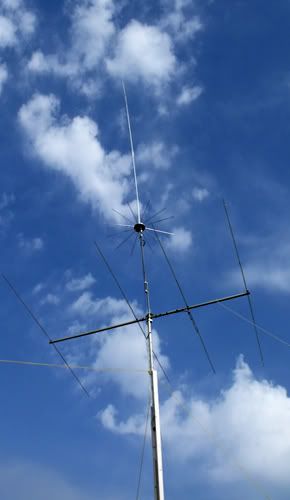I hope I made it clear that I was using the mast as the feed line in these examples, just to prove the point. I get your point though, it is the feed line here.
In this case the mast is connected to the same point as Eznec considers the ground, and this does not typically happen in real world installs. In the models the situation is similar to when we use an analyzer to analyze the feed point, the wire we use is balanced, whatever length, because both sides of the coax terminate at the same point, the meter. I take the position this is similar to what happens using Eznec this way.
The point for me is, in any case the height using Eznec shows to have an effect on the magnitude of CMC's due to this small height change.
IMO, folks often just get lucky with their installs, and this sounds like what guys like W8JI and Cebik are referring to, as a worst case scenario, when they're talking about modeling issues?
I tried to keep my remarks brief, so I choose not to go into the fact that a real world install with a feed line is not likely to produce similar results...like I see here.
In real world installs we might know and be able to measure the feed line (center conductor) from the feed point to the input of the transmitter, but we likely will never know how long the shield side of the feed line actually is. I take this idea from Maxwell II, as he describes at 21-3. The shield may go to the utility pole ground, and that could be in your neighbors yard. Read this in second column, top paragraph, as I marked below.
View attachment 9633
Concerning the source. I can make the source for the dipoles split and get closer to the center, but we here discussions all the time about dipoles needing a choke of some kind at the feed point in order to balance the feed point currents, else we are likely to have CMC that ill-affect the pattern and performance. I will post the results if this change makes a noticeable difference.
I did not consider the source of the 5/8 wave models in this case. I just placed them as close to the base as I could. Changing the source will have an effect however.

